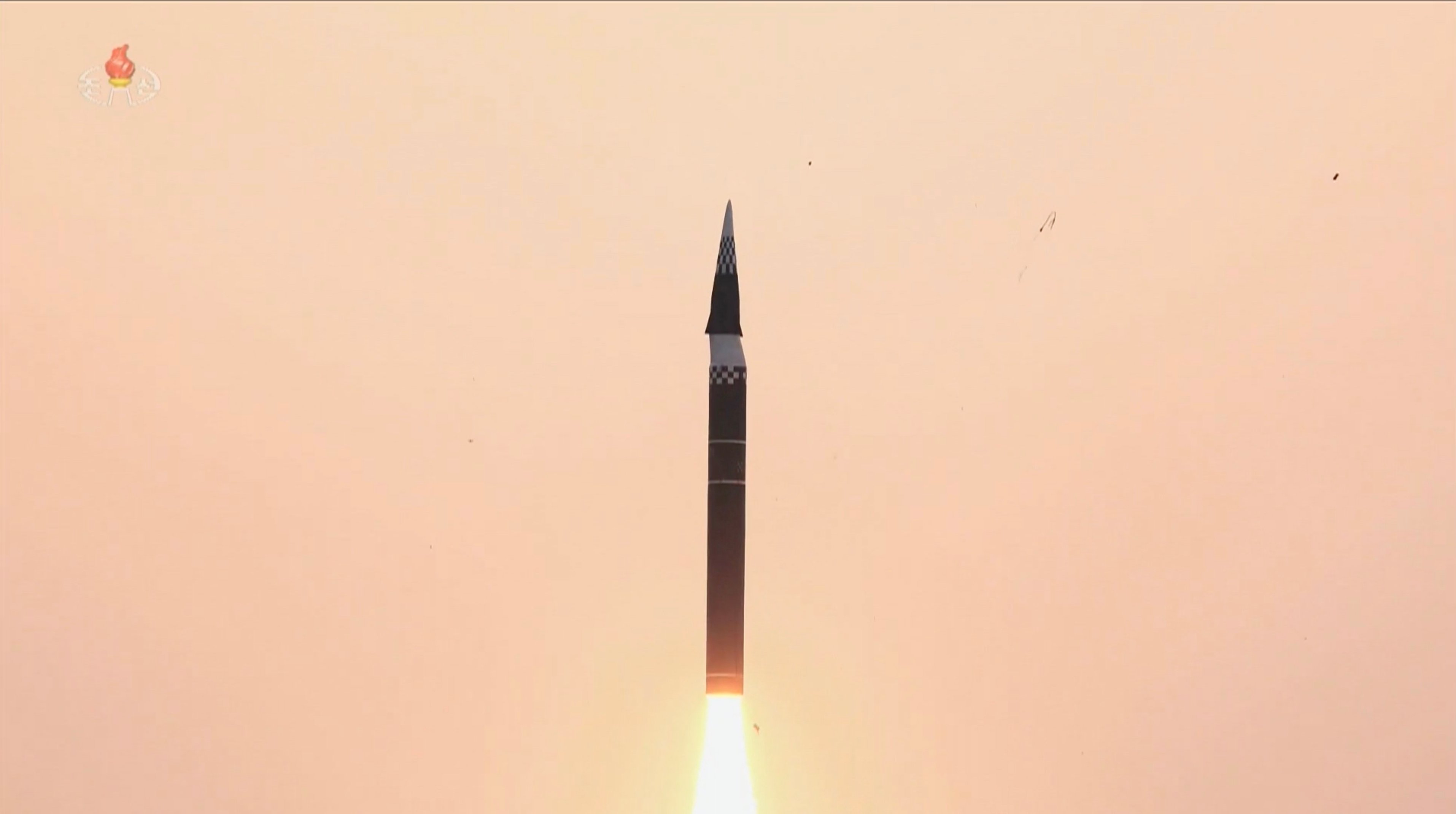SOURCE: AFI

North Korea has recently made headlines by joining the exclusive club of nations possessing Hypersonic Glide Vehicles (HGVs) with the unveiling of the Hwasong-16B. This significant development marks a milestone in the country’s missile capabilities, raising concerns among regional and global powers.
In simple terms, an HGV can be likened to an unmanned stealth bomber carrying a warhead, capable of flying at speeds exceeding Mach 5. What sets it apart is its ability to maneuver unpredictably, making it difficult for existing Ballistic Missile Defense Systems (BMDS) to intercept effectively.
North Korea’s latest achievement builds upon its previous advancements in missile technology. Unlike its earlier models, which relied on liquid-fuel engines known for their longer preparation times, the Hwasong-16B utilizes solid-fuel engines. This innovation enables quicker launch preparations, enhancing the missile’s responsiveness and agility.
The mobility of the Hwasong-16B adds another layer of complexity to its strategic value. By mounting the missile on a Transporter Erector Launcher (TEL), North Korea gains the flexibility to deploy it to various locations swiftly. This mobility not only reduces the risk of preemptive strikes by adversaries but also complicates defense planning for potential targets.
Moreover, the Hwasong-16B’s maneuverable warheads are specifically designed to evade missile defense systems. This capability, combined with its high speed and unpredictable flight path, poses a formidable challenge to existing defense mechanisms, further bolstering North Korea’s deterrence capabilities.
According to state media reports, the Hwasong-16B demonstrated its capabilities by flying a distance of 621 miles (1,000 km) and reaching a maximum altitude of 62.8 miles (101.1 km). Notably, it achieved these feats before descending to a lower altitude of 44.9 miles (72.3 km), showcasing its versatility and adaptability in flight.